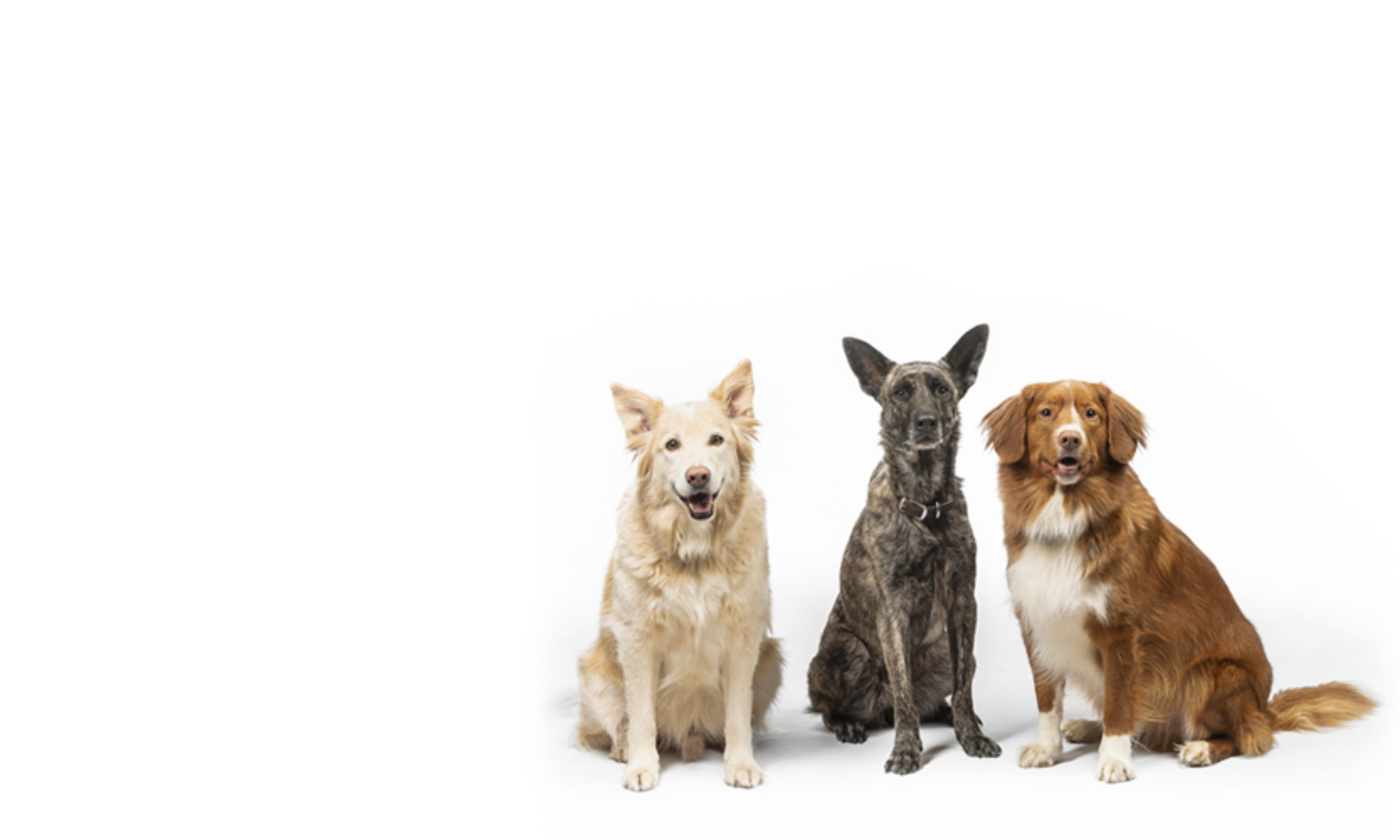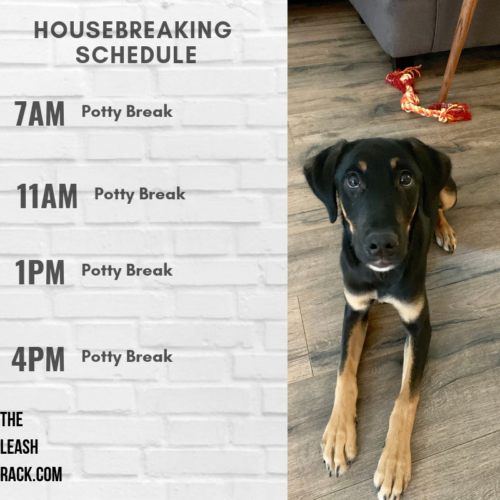As trainers, we often receive emails from owners with new puppies hoping for some tips and advice to speed the housebreaking process up. It can be frustrating, annoying and set backs tend to create panic for dog owners. “Will my dog ever pee outside or let me know she has to?” The answer is yes but….
The bad news with housebreaking is that there is no real way to ‘speed it up’. The learning process is entirely dependent on your dog, your routine, and your ability to manage your pup (which we will dive into in this post!). It goes without saying that you should face the reality that you will likely be cleaning up an accident or two! And that is OK. This is all a part of the house breaking experience, and I promise you once it is done, it will be a vague memory and you can move on to other behavioural goals for your dog.

What we can do to ensure success for your dog’s house training is to keep management and routines predictable and consistent.
The general rule with young puppies is that their age correlates with the length of time they can feasibly ‘hold’ their bladder for. For example, two months would correlate to two hours of bladder control for this age. As the dog matures in age, so to does their bladder control. As trainers, we tend to play this rule on the safe side and instead suggest you take your new puppy out every 30 minutes to an hour. Yes. You read that right.
Why?
- It is a lot easier to ensure our dogs can hold their bladders for an hour first before trying two hours and continuously cleaning up accidents while blaming the dog. Once your puppy has gone a stretch of time with no accidents, we can build upon it.
- We need to take into account how active young puppies are and how that affects their ability to hold their bladder. Dogs can easily learn to hold their bowels and bladder overnight for seven hours – because they are sleeping! Like you and I, inactivity causes their bodies to naturally slow down but this is not typical during the day when pups are active and consuming liquids/food consistently.
For this reason, we always recommend starting bathroom breaks in small increments and building your dogs bladder control slowly. To simplify the process, The Leash Rack has created a schedule for you to follow and build upon for success!
If you have a new adult dog and you have little history of the dog’s house breaking routine – this post is still helpful and the schedule can be applied easily. You can start with hourly ‘pee breaks’ or communicate directly with the adoption agency/foster home to see what their particular routine was like. It is important to note that a change in homes and routines can cause any dog who has mastered house breaking to regress. Stress and environmental factors can cause dogs to have setbacks so it is important to be forgiving and understanding as you navigate through the experience.
Here is a rough outline of what your new puppys day may look like, with potty breaks and activity built in.
7AM
– puppy wakes up, potty time
– play with your pup, train them, feed breakfast
8AM
– potty time, crate time/quiet time
If you work during the day, leave a pee pad out or have a friend or a hired dog walker help let your pup out. New dogs should not be left alone for the entire work day. We strongly recommend the use of a crate for times you’re away or an expen. Don’t know where to start? Check out our previous Crate Training Post here!
10AM
– potty time , play with puppy, train puppy, supervised quiet time
12:00-1:00PM
– potty time, play time, training time
– lunch time
– potty your dog after feeding, or within the hour
2:00-4:00PM
– play time / train time, potty time
– quiet supervised time
4:00-5:00PM
– potty time, supervised play, a walk
– dinner followed by a potty break
6:00-8:00PM
– wind down time, chew time, potty time
9:00-10:00PM
– potty the dog and bed time

TIPS FROM THE PRO’S
- If your dog has an accident, try to interrupt them gently and redirect them outside. If you miss it, tough luck! Clean up the mess and make note of what may have caused this accident , and resolve to manage your dog better
- Clean your accident spots with a cleaner designed for dog urine – Natures Miracle is a popular product and sold at most pet stores. This cleaner breaks down the enzymes in urine that create the pattern of ‘marking’ in dogs, and it works on all types of surfaces.
- Use your crate! Crate training speeds up potty training because dogs are reluctant to pee/poop where they eat and sleep. The golden rule for house breaking is if your dog cannot be directly supervised, she should be in her crate!
- Manage the amount of freedom your dog has. If your dog has come inside from the yard without doing her business, then she should not be allowed to roam free in the home with a potentially full bladder
- After play, exercise or exciting events (ie: meeting a new family member!) are the most overlooked times when a dog may have an accident, so after playing with your dog try to take them out as soon as possible! A helpful tip to remember this? Think of the fact that we always use the washroom after a busy activity or before bed time. The same goes for our pets.
- Reward your dog for pottying outside. This is a big deal and you want to encourage this and celebrate it – but don’t celebrate too early as your pup could get excited and distracted before finishing up.
- If your dog is easily distracted or hyper, try to take your dog out into your yard on a leash to encourage them to potty quickly. If you are in a condo or apartment with no yard, take your dog out on leash and heavily reward a fast potty. If your dog prefers a certain spot, take them to that spot immediately.
As your dog grows and they begin to learn their ‘bathroom’ routine, you can start to increase the amount of time they go without a potty break. For example, a dog that has had no accidents for a week and a half at a one hour interval can try holding it in for one and a half to two hours!
We get it. It is a lot of work. No one says house breaking is easy, but the more diligent you are in the beginning the better your dogs bathroom habits will be. If your dog is having many accidents, cut back the time they are ‘holding it in’ for, follow the schedule above, increase your management and make use of your crate to build it back up again!
Happy Training

